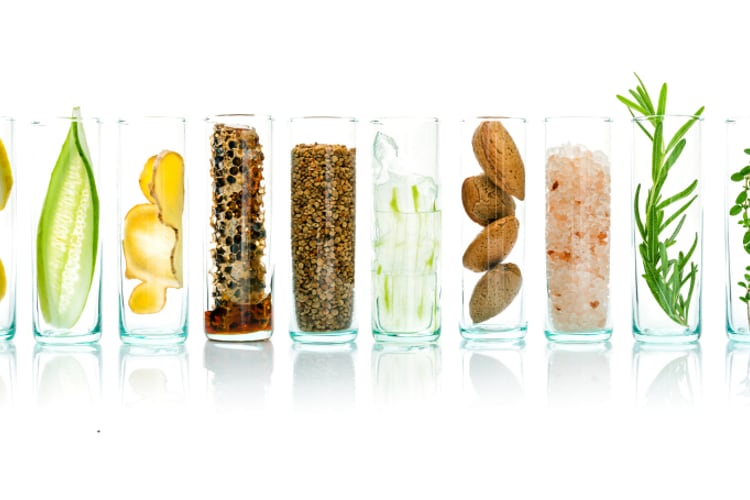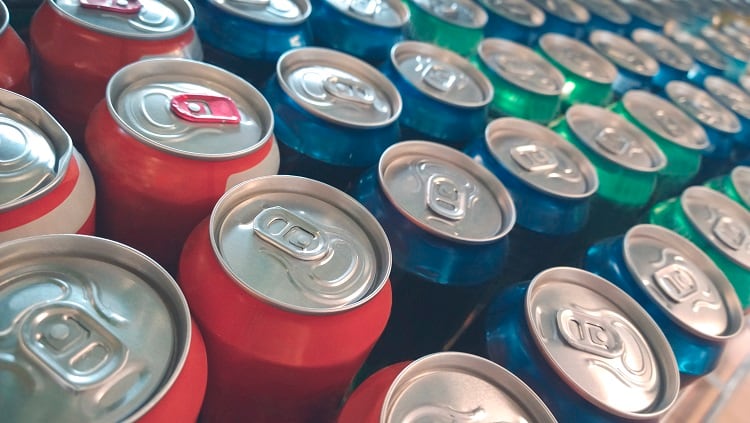As consumer demands for health, nutrition and immunity unite with sustainability goals and better-for-the-planet supply chain efforts, brands reformulate to reflect consumer priorities and the changing food and drink landscape.
In February 2021—ahead of the latest National Food Strategy— the UK government unveiled its research briefing, entitled Food and drink reformulation to reduce fat, sugar and salt.
“There is overall consensus on the health benefits of reducing saturated fats, free sugar and salt,” the research revealed. “However, this can present some challenges for the industry, given the functional role of these ingredients,” it noted.
Product quality, industry engagement and consumer preferences are all considerations food and drink brands must make when entering the reformulation process.
Reformulation can be a closely guarded secret, and food and drink brands can enter into the process for a number of reasons.
From product launch to rethink or recall, to market research and design thinking, to reformulation and roll-out—it is not a quick process to undertake and there is not a ‘one size fits all’ approach when it comes to reformulation. In fact, there are several reasons why a food and drink brand may need to go back to the drawing board to update its product.
Why do brands reformulate?
Highlighting just how varied the reasons for reformulation are, we explore four of the key factors influencing reformulation with Richard Horwell, Managing Director of Brand Relations:
- Legal requirements: A legislation change such as the introduction of the sugar tax on soft drinks. “This created a lot of reformulation, not only to avoid the tax and increased cost of the product, but also to suit consumer demand as they started to perceive the sweeter drinks as the unhealthy ones,” shared Horwell. Subsequently, this had “a knock-on effect to the juice and smoothie market, as even though sugar from fruit juice was not taxable, consumers still viewed the sugar levels on the nutritional information,” Horwell added.
- Slumping sales: A reduction in sales is a common reason for reformulation. “Quite often, [brands] rebrand to attract a new audience,” explained Horwell. However, reformulation does not guarantee skyrocketing sales and promising profits. “These days, younger consumers are far cleverer than that and they look for more innovation and added benefits rather than just a reformulation,” Horwell noted.
- Consumer changes from the COVID-19 pandemic: Covid-19 has had a significant impact on consumers attitudes. Increased awareness and communication on added risks associated with obesity and the importance of being healthier has led many brands to reformulate to try and retain sales. “Just being a nice tasting drink is no longer important to consumers, they demand much more to contribute to their immune system,” added Horwell.
- Sustainability strategies: Reformulation is on brands’ agendas as they rethink their product offerings to remove preservatives and artificial colourings in a way that reflects the modern consumers’ desire to look for all-natural products.
Legacy brands leverage demands
Looking at the perspective of established brands from the product development side, it is easy to see the challenges present when we live in such a flourishing and rapidly-evolving food and drink market.
“The issue that sometimes such established brands have is that they were developed at a time when our understanding of the science of nutrition was a lot less than it is now and our food consumption patterns were very different,” shared Valia Christidou, Founder of The Food Launchpad. “Food was not as omnipresent as it is now,” Christidou added.
As science progresses, all those age-old recipes need to also progress and incorporate current knowledge, which leads to the challenges food manufacturers face with reformulation today.
Commenting on the range of these obstacles, Christidou outlined these are wide-ranging: “From needing to rebalance a recipe when an ingredient is being reduced, to changes that need to be made in the manufacturing process so that alternative recipes can be used, to having to rethink food safety steps in the process.”
Our expectations are greater too. “Reformulated products need to not only be better nutritionally but also equally tasty, if not tastier than before,” says Christidou. “A reformulated product that consumers stop buying and instead revert to alternative products with poorer nutritional credentials is not helping us improve our diet.”
Reformulation in the COVID-19 era
COVID-19 presents a huge challenge. With lowering sales, stalled foodservice retail opportunities and market uncertainty—the decision to reinvest and reformulate is not an easy one. Changing attitudes sparked by the pandemic has prompted brands to reconsider their formulations and enter the manufacturing environment once again to revisit and update their products.
After three years in the clean caffeine space following its launch in 2018, Riff Cold Brewed has recently unveiled its Riff Energy+ Immunity product, which is the brand’s second iteration of a cascara beverage.
“The first iteration was a drink, a line called Alter Ego,” detailed Paul Evers, Co-founder of clean caffeine brand, Riff Cold Brewed. “We named it for being coffee's lesser-known counterpart, but that has been replaced by Riff Energy+ Immunity,” added Evers.
The team started the build of its e-commerce channel in summer 2020 and continued to create its brick and mortar traditional channel distribution networks. Then in the autumn, the team turned its attention to focusing on delivering a product that can scale quickly. “We went back to the drawing board on the cascara beverage and completely reformulated and rebranded,” Evers said.
That whole process was informed by direct feedback from a key target audience of theirs, college students. Describing their reformulation process, Evers relayed: “We took many of them through a process of showing them various concepts in the packaging, design, the messaging hierarchy, value propositions, and they helped to inform and evolve that.” The feedback received shaped the product’s reformulation.
The market research response also helped Riff Cold Brewed understand its visual direction. Their target audience was looking for something that conveyed a fun personality and ethos. Exploring the communication tools available, the team set about learning how to connect and leverage them in a way that was appealing to its audience.
The brand also did sensory testing with a smaller subset behind the product development, which informed the formulation process. On the formulation’s sensory side, the research found that consumers were seeking a higher perceived sweetness and then a better balance between the cascara flavour notes and the fruit flavour driving notes, like blackberry and elderberry with guava and passion fruit, or pomegranate and hibiscus.
Following regulatory requirements and migrating from shutting down to opening up, the brand found that the previous iteration of the product was no longer serving the purpose of the brand in terms of its ability to deliver small-batch beverages. “We were trying to figure out how to make this work with the challenging environment, and ultimately decided we needed to figure out how we could focus on our primary business, which is producing single-serve RTP package products for distribution,” explained Evers.




